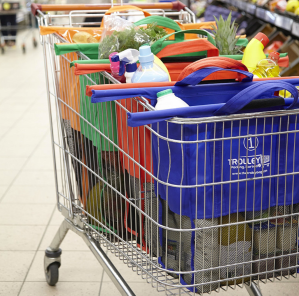According to an Independent article detailing the average middle-class family of four’s carbon emissions, the biggest source of carbon emissions (16 tons per year) comes from our general consumerism, whilst a meat based diet produces all of 12 tons of carbon per year. Though these numbers don’t account for the pandemic and are a rough estimate that will vary family to family it does give you some idea of our own impact.
So what can we do differently? The good news is that it does not take much to live more sustainably. There are lots of things that can be done and most of them are very easy to do when you consider how much time we spend at home these days. So here are three ideas that we hope will inspire you.
🌳🌳🌳
Cleaning Products
Did you know that lemon and vinegar both make for excellent cleaning agents? Using these means less waste from packaging, less harmful chemicals being put into the water system and you get to save a little money too.
Some easy recipes to start you off can be found on Ecotricity’s Post: Sanitise Your Home the Natural Way
However, if you don’t have the time or inclination to make your own products there is always ethical shops like The Good Club and refilleries like Scrapless and Cloughs.
Composting
Did you know that the food scraps that you throw into the bin does not get the opportunity to decompose? This is because they get buried under the ground with the rest of the landfill and compressed with no oxygen. The solution to this is to compost at home.
According to BBC Good Food’s How to Compost Food at Home, two popular systems are the Boyakashi Composting System and Worm Composting. You do not need a big garden for this – in fact Boyakashi composting is done indoors – and you won’t need much more than a few small bins with lids.
Reusables
I am sure you already have a reusable water bottle, it is an accessory that most people have these days. The metal ones double up as a flask which has been great for hot drinks on winter walks, hasn’t it? Have you been finding other ways to reuse and repurpose things though?
As recommended above, refilleries are a great way to step closer to zero waste. You just need to save your jars, bottles and tubs and fill them with your grains, cleaning products, coffee beans and even sweeties. Not only are you then drastically reducing your single plastic use but it is an opportunity to support local shops as well.

Reusing plastic bags has become increasingly popular as has buying reusable tote bags. However, another popular option is to use trolley bags for big shops. It is especially good for those that like to organise their shopping. Also great for those that like to scan as they go.
🌳🌳🌳
There are so many things that we can do that make such a huge impact. We would love you to share with us the little things you have been doing. Anything that has worked or perhaps something you thought would work that hasn’t!
In the meantime, here is a carbon footprint calculator that helps measure your impact on the planet. It is pretty eye opening and thought provoking. There is also a chance to offset your carbon emissions if you wish.


Really interesting – thank you!
LikeLike